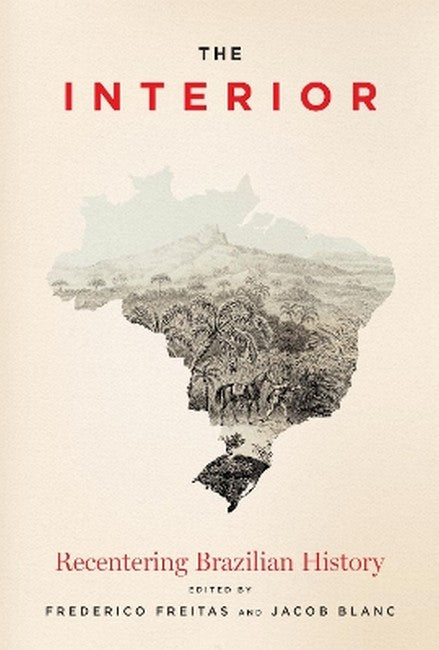Frederico Freitas is an associate professor of Latin American and digital history at North Carolina State University. He is the author of Nationalizing Nature. Jacob Blanc is an associate professor of history and international development studies at McGill University and the author of The Prestes Column: An Interior History of Brazil.
Request Academic Copy
Please copy the ISBN for submitting review copy form
Description
Introduction (Frederico Freitas and Jacob Blanc) Part I. The Knowledge Interior Chapter 1. Indigenous Spies and Surveillance in Late Colonial Brazil (Heather F. Roller) Chapter 2. Imagined SertOes: The Quest for Silver, Indigenous Conquest, and the Circulation of Knowledge in the Bahian Interior (Judy Bieber) Chapter 3. The Interior as Borderlands: The Campanha at the Edge of Empire (FabrIcio Prado) Chapter 4. SAo Paulo and Its Interior in the Eighteenth and Nineteenth Centuries (Carlos de Almeida Prado Bacellar) Part II. The National Interior Chapter 5. Moral Grounds: Plants and Plans for Imperial Brazil's Backlands (Seth Garfield) Chapter 6. The Romantic SertOes (LUcia SA) Chapter 7. Charting the Planalto Central: The Quest for a New Capital and the Opening of the Brazilian Interior in the 1890s (Frederico Freitas) Part III. The Roving Interior Chapter 8. The Wandering Bororo of Central Brazil in Photo Albums and the 1908 National Exhibition in Rio de Janeiro (Antonio Luigi Negro) Chapter 9. A Cartographic Picaresque: The Prestes Column and the Symbolism of Brazil's Interior (Jacob Blanc) Part IV. The Transformed Interior Chapter 10. The March toward the Hinterland: The West as Geographic Fiction and the Conquering of Central Brazil (Sandro Dutra e Silva) Chapter 11. From Boi Gordo to Biofuel: Western SAo Paulo and the Transformation of Rural Brazil (Thomas D. Rogers) Epilogue. The Interior and the Scale of History (Susanna Hecht) Acknowledgments Contributors Index
This volume exquisitely succeeds in presenting many fresh new lenses through which to see these concepts of the frontier in both micro and macro frames. I find this among the best volumes I've seen in some time, containing the most effective voices in Brazilian history today, both within Brazil and beyond. - Emily Wakild, Boise State University, author of Revolutionary Parks: Conservation, Social Justice, and Mexico's National Parks, 1910-1940 "Interior history" is a framework that emphasizes how noncoastal spaces have been critical to the development of Brazil in everything from politics to culture to economics. Coeditors Freitas and Blanc have cleverly positioned the volume as the opening salvo in a reexamination of national identities globally by centering the Brazilian interior and understanding its broader impact. The twelve chapters, written by a multinational group of authors, are short and well written. Together they focus on themes including real and imagined geographic scales, Indigenous worlds, human and nonhuman lives and actions, and natural and built environments. - Jeffrey Lesser, Emory University, author of Living and Dying in Sao Paulo: Immigrants, Health, and the Built Environment in Brazil

